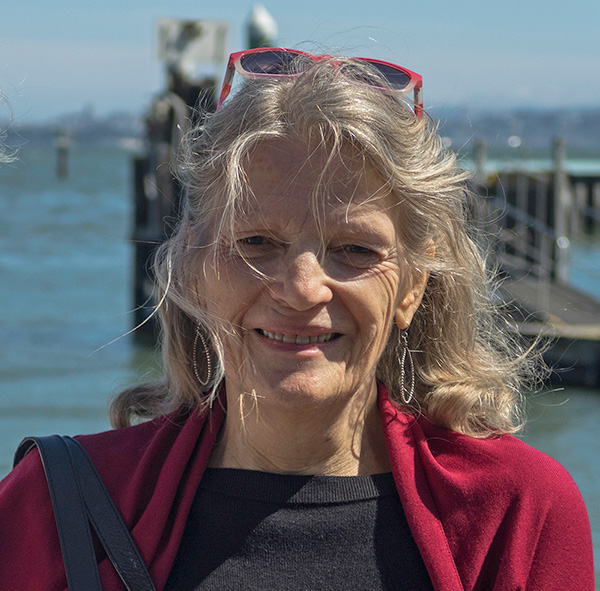I am 81 years old. I was born and raised in Baton Rouge, Louisiana, and have lived the last quarter of my life in California. The intervening years were spent in pursuit of a college education in North Carolina, working for IBM in Washington, DC, educating myself in photography in New York City and Connecticut, and living in Michigan where my parents finally moved to be near my sister and her family. Somewhere along the way I got married, had two sons, divorced, and stopped photographing.
I moved to California in 1996, to Marin County north of San Francisco. Five years later I met a man who saw some of my work on the walls of my home and encouraged me to get back to photographing. He courted me for a year after which he asked me to move in with him. In 2005, he bought me a digital camera and I fell in love again with the magic of recording images I found interesting and unique. In 2010, I started photographing the two of us as we began showing signs of getting old. Little did I know that eleven years later I’d still be engaged in that project, entitled Time As We Know It.
I have received numerous recognitions for my work including being accepted into the 2020 deYoung Museum Open Exhibition. I was also awarded the grand prize at the 2021 Kaunas (Lithuania) International Photo Festival and was honored to be voted into the Critical Mass Top 50 artists in Photolucida’s 2021 competition.
Time As We Know It
On my 70th birthday, I woke from a dream in which I had rounded a corner and seen the end. This disturbing dream moved me to begin photographing my partner and myself, chronicling our time of growing old.
Now, eleven years out, he and I face numerous physical challenges: decreased mental acuity, especially memory; the diminished quality of our skin, hair and teeth; mild disfigurement; as well as the need to tend vigilantly to our balance, hearing, sight, physical agility and getting adequate sleep. Inside we are learning to accept what is, sometimes going from anger, impatience, sadness or fear to seeing the humor in the idiosyncrasies of growing old. We realize that if we can be comfortable with our own aged appearances and limitations, then the potential exists that others will become more comfortable
witnessing this transformation and possibly become more comfortable with their own.
I have entered taboo territory, aging and death. The creation of these photos is part of my own way of dealing with the inevitability of dying by bringing attention to it and accepting it. I have come to embrace them as a tribute not just to our lives but also to the demanding and courageous task of growing old gracefully, graciously, and aware. A certain wisdom is evolving from years of living and observing, eventually unveiling previously unseen associations, patterns and similarities. I am gaining a much-appreciated perspective that was not available to me as a younger woman.
